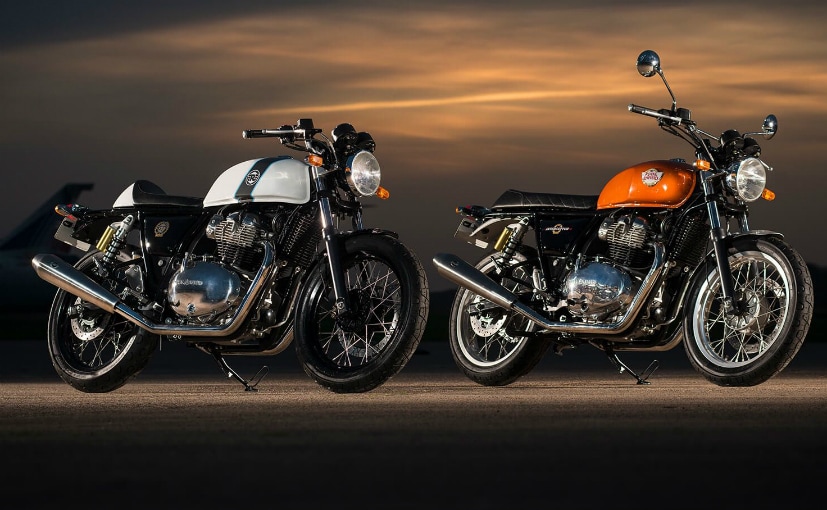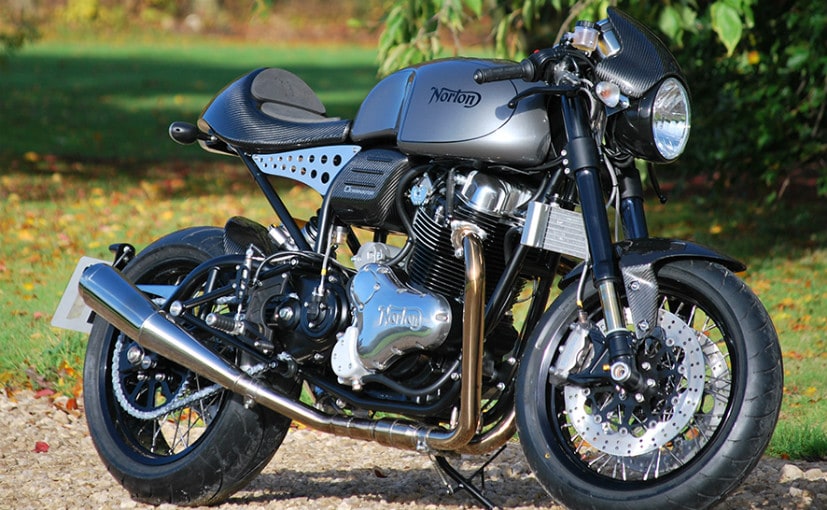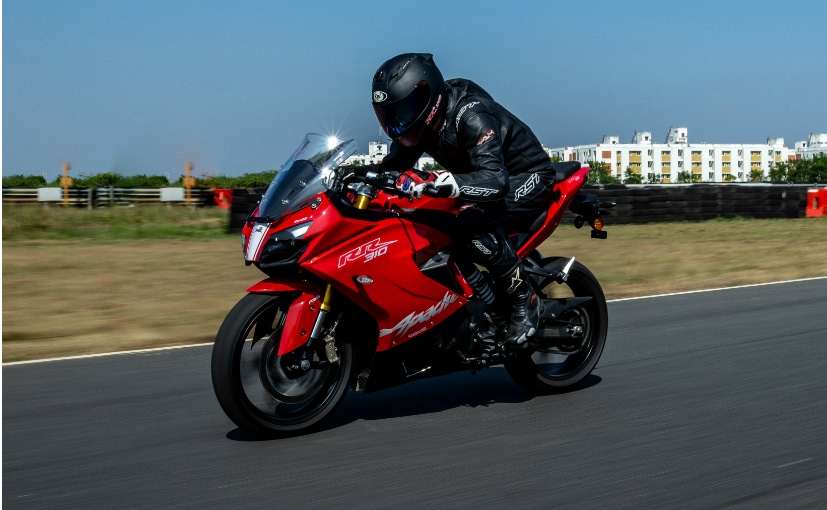Opinion: Why Norton Motorcycles Will Not Compete With Royal Enfield
April 17, 2020 will be etched as a milestone in the history of TVS Motor Company, India's third largest manufacturer of two-wheelers. It's a day when TVS announced the acquisition of Britain's iconic brand Norton Motorcycles. From being a manufacturer of mopeds, scooters and mostly small and mid-sized motorcycles, TVS now owns a brand with rich British heritage and racing lineage, dating back to more than a century. And heritage is something in no short supply for Norton. After all, it's been one of the dominant names in post-war British motorcycle history, along with the likes of Triumph, BSA and Royal Enfield. So, will TVS pull of a success story similar to what Royal Enfield has achieved under Indian ownership? The answer to that question lies in history - past and present, as well as the difference in the brand positioning and brand identity of Norton and Royal Enfield.
Also Read: TVS Motor Company Acquires Norton Motorcycles

Norton is an iconic classic British motorcycle brand like Royal Enfield
History that binds
From the 1950s till the early part of the 21st century, Norton Motorcycles changed ownership several times, at one point even forming an amalgamation of brands with BSA and Triumph, under the Norton Villiers Triumph name. NVT also collapsed, and the Norton brand faded into oblivion, until British businessman Stuart Garner bought it back from American interests in 2008. Under his ownership, iconic names like the Norton Commando and Norton Dominator were revived, with a brand new 961 cc engine, and a new range of models were explored and developed, until now, that is, when Norton once again went into administration before being acquired by TVS Motorcycles.
It's a story similar to another legendary motorcycle brand with British roots - Royal Enfield. The difference is that Royal Enfield is a British brand which collapsed in 1967, but continued to survive in India, where Enfield India continued to build the same 350 cc engine it had done since 1955, under licence to assemble the bike. The difference with Norton is that, Royal Enfield collaborated with India's Eicher Group in 1990, going on to be taken over completely by the Eicher Group in 1994.

Royal Enfield's global ambitions are spearheaded by the company's 650 cc twins - the Interceptor 650 and the Continental GT 650
And although Royal Enfield faced demand problems during the 1990s, to the brink of collapse, by the turn of the century, the brand started turning around, propelled by the aura of the Royal Enfield in India, as well as introduction of newer technologies making the bikes more accessible, fuel efficient and more reliable than ever. The rest is history; today Royal Enfield is probably the fastest growing motorcycle brand. And just like Royal Enfield, Norton Motorcycles also has a 650 cc, parallel-twin engine platform. But that doesn't mean TVS will immediately start making products to take on the Royal Enfield 650 Twins, the models which are spearheading Royal Enfield's push into newer global markets.
The Norton story now
TVS Motor Company paid GBP 16 million (around Rs. 153 crore) to buy Norton, and that includes the brand, its assets, all the intellectual property and contracts of 58 existing Norton staff have been transferred to the new owner. What that essentially means is that TVS is now the exclusive owner of the Norton brand, existing engine platforms, and other engines and technology under development, as well as Norton's design and engineering team. At first glance, the deal does bring forward questions like how Norton fits into TVS's current and strategic business vision, as well as the current motorcycle range TVS manufactures, as well as exports to more than 60 countries worldwide, in Asia, Africa and Latin America.

The Norton Superlight SS is a 650 cc supercharged engine and was slated for production in 2020
After acquiring Norton, TVS gets ownership in a new premium motorcycle segment that gives access not just to the brand equity Norton commands, but also to the technology and engineering behind models like the 961 cc engine based Norton Commando and Dominator, the 1200 cc V4 superbike, as well as the middleweight 650 cc Atlas and Superlight models. But the last two models may be 650 cc, but they are inherently different from Royal Enfield's 650 Twins. The Atlas models are more neo-retro Scrambler-type designs, while the Superlight is a supersport class sportbike.

The Norton SG6 race bike is based on the Norton V4 RR road bike
The Norton plan
For now, TVS seems to have some things sorted out. Manufacturing of Norton bikes will continue to remain in the UK, spearheaded by the same design and engineering team. A new management team will be appointed to oversee and give strategic vision to Norton's immediate revival plans, which include delivering bikes to existing owners who have already put in their money, as well as pushing Norton to outside the UK to discerning customers worldwide. And that is what TVS management has to say, that they will extend full support to Norton to regain its rightful glory.
Also Read: TVS Will Not Shift Norton Manufacturing To India

The Norton Dominator is one of the models based on the 961 cc parallel-twin engine
But some questions remain. Norton's 961 cc engine rights are also said to have been sold to China's Jinlang, and the 650 cc engine platform will likely see production in the Zongshen Cyclone RX6 adventure tourer, long before Norton gets anywhere close to a production version of the Atlas models. And according to TVS Joint Managing Director Sudarshan Venu, some versions of these engines do not meet new emission regulations, without going into specifics of which engines these are. And as Venu told carandbike, "While some of these engine rights have been sold away, that does not concern the existing portfolio, or in-development portfolio that we have taken over now."
Also Read: Norton Reportedly Sold Off 961 Engine Rights To Chinese Firm
Global ambitions
Indeed, the immediate and present vision of TVS will be to help Norton shake off the dust, and get back on its wheels. And Norton's brand positioning is one that is in the premium segment, and something TVS recognizes and will give brand independence, including setting up new management, as well as manufacturing, which will continue to be based out of the UK.
Also Read: Zongshen Cyclone RX6 Based On Norton Atlas Nears Completion
"Norton stands for a certain segment of the market which is very premium, which values its craftsmanship, with bespoke building capability. So, the idea is to be global in markets which are relevant to this, and we'll cater to those customers in those markets, as part of the strategy, to grow the numbers and create value. Wherever, synergies with TVS are available with distribution and supply chain, of course we'll harness them, but the idea is to maintain, build and take into the future, the charm and legacy of Norton in the customer segment where it caters to," Venu told carandbike.
Also Read: TVS Rules Out Smaller Displacement Norton Motorcycle

The Apache RR 310 is TVS Motor Company's flagship model
TVS currently has a range of motorcycles, up to the flagship 313 cc TVS Apache RR 310, a bike based on the common platform developed with TVS Motor Company's collaboration with BMW Motorrad. The same engine is used in the BMW G 310 R, as well as the BMW G 310 GS, the entry-level motorcycles from BMW Motorrad. In the current scheme of things, it doesn't look like TVS will be looking to position Norton in a segment that will be more affordable, and in turn relate to high volumes, whether in India, or in markets abroad. But in the long run, TVS will have gained access to the engineering and the tools to create new machines and bikes that will likely rival Royal Enfield in the domestic market. Even if that is a possibility, it's unlikely that is going to happen, at least for now.
from CarandBike - Latest News
Comments
Post a Comment